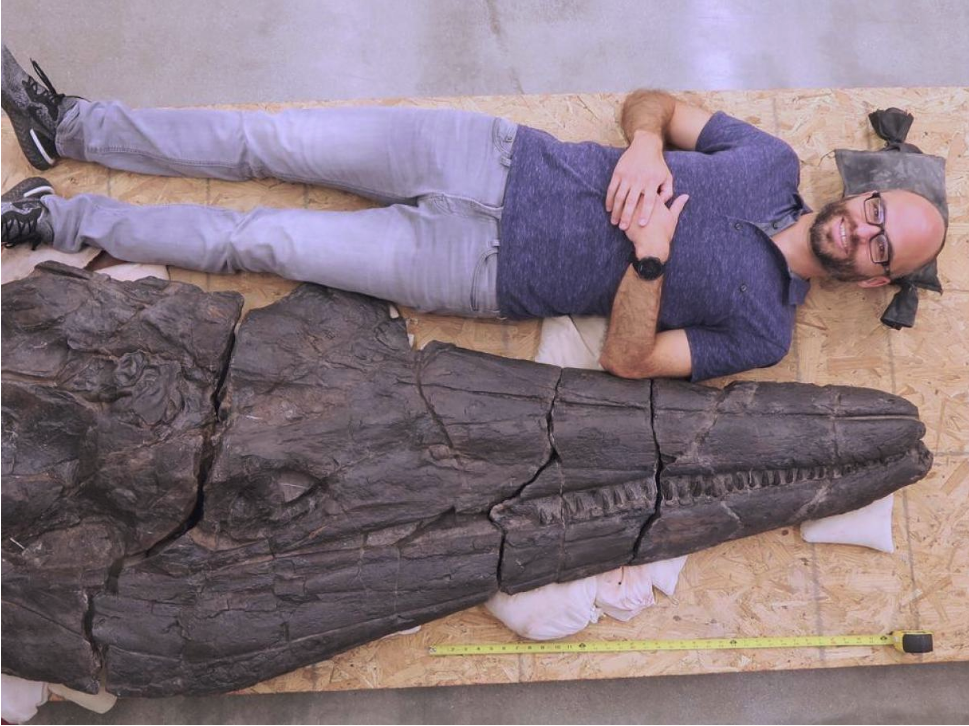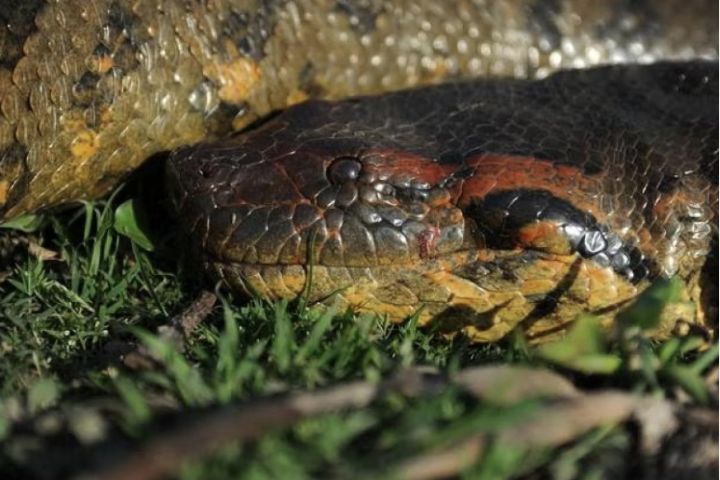Human-size skull only: Extraordinarily large ‘sea monster’ discovered
Paleontologists only discovered the remains of a “sea monster” whose skull reached two meters in length.
About 246 million years ago, the total size of the body of the giant animal that lived in the Triassic period was 17 meters.
According to the researchers, this marine reptile, whose Latin name is Cymbospondylus youngorum, was actually a species of ichthyosaur.
Similar in appearance to sharks or dolphins, ichthyosaurs were among the creatures that dominated the oceans during the Mesozoic Era, which began 251 million years ago and ended 66 million years ago.
On the other hand, the gigantic size of the newly identified species showed that ichthyosaurs grew rapidly and reached enormous sizes in just 2.5 million years of their total lifespan.
 Because previously discovered fossils revealed that the oldest relative of the new species, 2.5 million years ago, was less than a meter tall. This enlargement marks an extremely short time in evolution.
Because previously discovered fossils revealed that the oldest relative of the new species, 2.5 million years ago, was less than a meter tall. This enlargement marks an extremely short time in evolution.
The authors of the study, published in the peer-reviewed scientific journal Science, believe this rapid development was triggered by the Permian-Triassic Extinction, which occurred 251.4 million years ago.
According to the findings, this giant species emerged about 248 million years ago, just after the mass extinction, and went extinct 90 million years ago.
“We discovered that ichthyosaurs grew to gigantic sizes much faster than whales at a time when the world was recovering from a devastating extinction,” said Lars Schmitz, co-author of the study.
It’s a beacon of hope and a sign of life’s resilience. If environmental conditions are right, evolution can happen very quickly and life can come back.
A study published in the peer-reviewed scientific journal Nature Geoscience in 2012 revealed that it took about 9 million years for Earth to recover after this extinction. The event that led to the extinction of 96 percent of all marine species and 70 percent of land vertebrate species is also known as the “Great Dying”.
The gigantic dimensions of Cymbospondylus youngorum, which appeared only 5 million years after the Great Dying, therefore become even more impressive.
The animal, thought to have weighed up to 45 tons, lived in the then-existing Panthalassic Ocean, off the west coast of today’s North America.
The continents had not yet separated while this animal ruled the waters, and the Panthalassic was a superocean surrounding the combined landmass.
Like dolphins and whales, these air-breathing animals had a streamlined body that allowed them to move through water, large eyes for better vision at depth, jaws filled with conical teeth, and an elongated skull suitable for catching fish or squid.
“Imagine an animal like a sea dragon: aerodynamic body, very long, finned limbs, and a long tail,” Schmitz said.
This new fossil impressively documents the rapid evolution of ichthyosaurs’ giant size.





